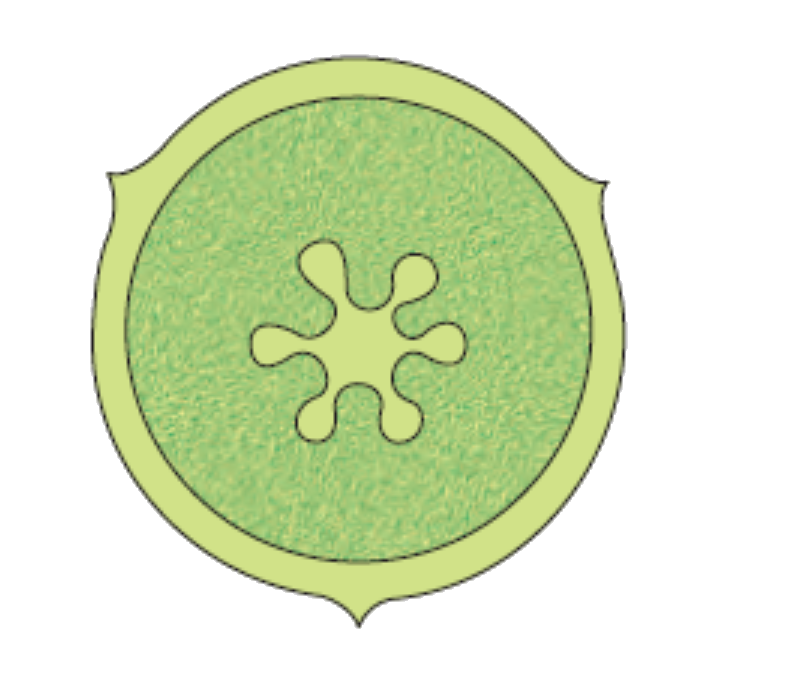What is placentation ? Name its types and describe any one with typical diagram
Step-by-Step Solution:
1. Definition of Placentation:
- Placentation refers to the arrangement of ovules within the ovary of a flower. It is a critical aspect of plant reproduction as it determines how the ovules (which develop into seeds) are positioned within the ovary.
2. Types of Placentation:
- There are five main types of placentation:
1. Axial Placentation
2. Marginal Placentation
3. Parietal Placentation
4. Free Central Placentation
5. Basal Placentation
3. Description of Axial Placentation:
- In axial placentation, the ovules are attached to a central axis within a multilocular ovary. This means that the ovary has multiple chambers (locules), and the ovules are arranged along the central column or axis.
- Examples: Common examples of plants exhibiting axial placentation include lemon (Citrus limon), tomato (Solanum lycopersicum), and china rose (Hibiscus rosa-sinensis).
4. Typical Diagram:
- To illustrate axial placentation, draw a cross-section of a multilocular ovary.
- Label the parts:
- Central axis (placenta)
- Ovules attached to the placenta
- Locules (chambers of the ovary)
- The diagram should show how the ovules are arranged along the central axis, highlighting the multilocular structure of the ovary.
- Placentation refers to the arrangement of ovules within the ovary of a flower. It is a critical aspect of plant reproduction as it determines how the ovules (which develop into seeds) are positioned within the ovary.
- There are five main types of placentation:
1. Axial Placentation
2. Marginal Placentation
3. Parietal Placentation
4. Free Central Placentation
5. Basal Placentation
- In axial placentation, the ovules are attached to a central axis within a multilocular ovary. This means that the ovary has multiple chambers (locules), and the ovules are arranged along the central column or axis.
- Examples: Common examples of plants exhibiting axial placentation include lemon (Citrus limon), tomato (Solanum lycopersicum), and china rose (Hibiscus rosa-sinensis).
- To illustrate axial placentation, draw a cross-section of a multilocular ovary.
- Label the parts:
- Central axis (placenta)
- Ovules attached to the placenta
- Locules (chambers of the ovary)
- The diagram should show how the ovules are arranged along the central axis, highlighting the multilocular structure of the ovary.
Topper's Solved these Questions
- SAMPLE QUESTION PAPER 5 BOOK - ICSECHAPTER - SAMPLE QUESTION PAPER 5 EXERCISE - Part - II Section - C
11 Videos
- SAMPLE QUESTION PAPER 5 BOOK - ICSECHAPTER - SAMPLE QUESTION PAPER 5 EXERCISE - Part - II Section - A
10 Videos
- SAMPLE QUESTION PAPER 4 BOOK - ICSECHAPTER - SAMPLE QUESTION PAPER 4 EXERCISE - Part - II Section - C
9 Videos
- SEED DORMANCYBOOK - ICSECHAPTER - SEED DORMANCYEXERCISE - REVIEW QUESTIONS (VI Long Answer Type Questions)
10 Videos
Similar Questions
What is tendril? Name any two types of tendrils.
View SolutionWhat type of placentation of seen in sweet pea
View SolutionWhat is a biogeochemical cycle? Enumerate and describe any one of them with the help of a suitable diagram.
View SolutionName the type of respiration labeled x in the given diagram

View SolutionWhat is an allergy? Name the types of allergens.
View SolutionWhat is gametogenesis? Name its two types and give at least two differences between them.
View SolutionWhat is venation? Describe various types of leaf venation.
View SolutionWhat is a joint? Name various type with examples.
View SolutionWhat is meant by pollination ? Name the two types of pollination.
View SolutionThe type of placentation shown in the given diagram is

View Solution
